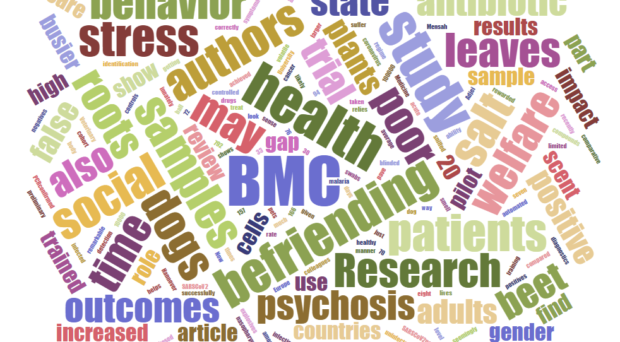
BMC Infectious Diseases – Impact of delayed processing of positive blood cultures on organism detection: a prospective multi-centre study

Many healthcare services do not have the resources or capacity to subculture positive blood samples to diagnose bloodstream infections. As a result, centralisation of diagnostic laboratory services is becoming popular. ‘Centralisation’ describes building up one ‘central’ laboratory while closing or downgrading peripheral or smaller laboratories. In order to better utilise healthcare resources and save money, blood samples are increasingly being shipped to a central location for processing. In some low- and middle-income countries, a lack of necessary infrastructure and resources may mean that centralisation is the only viable option.
However, the impact of delaying the subculture of positive blood samples on the diagnostic yield of pathogens while they are shipped to central locations remains relatively unknown. In BMC Infectious Diseases, researchers find that delaying subculture for up to a week didn’t impact the diagnostic yield for almost all of the pathogens investigated, including Streptococcus pneumoniae. However, the researchers demonstrate that storage temperature may affect viability, especially in tropical settings. The study provides useful data to consider when setting up new diagnostic microbiology services.
BMC Pediatrics – Effect of physical therapy on bone remodelling in preterm infants: a multicenter randomized controlled clinical trial

According to the World Health Organisation, an estimated 15 million babies are born preterm every year before 37 weeks of pregnancy are completed. These premature babies have a much higher risk of osteopenia. This condition leads to reduced bone mineral density and subsequent disease due to multiple prenatal and postnatal factors that impair bone remodelling.
Bone remodelling is essential for normal growth and development. Osteoclasts remove old bone while osteoblasts lay new. Normally, these two cell types work in balance, but if the rate of bone resorption outpaces new bone formation, the skeleton can become weak.
Physical activities that exert mechanical stress on the bones stimulate bone growth. In BMC Pediatrics, researchers performed a randomised controlled clinical trial to investigate the effect of three different physiotherapeutic methods on bone remodelling in preterm infants. The study found that reflex locomotion therapy (RLT) increased levels of bone formation biomarkers and the height of preterm infants. These results suggest that RLT positively affects bone formation and growth, which may help prevent and treat osteopenia in this population.
BMC Veterinary Research – The impact of the COVID-19 pandemic on a cohort of Labrador retrievers in England

How did COVID-19 pandemic restrictions affect the lifestyle and health of our dogs? To help answer this question, researchers from the University of Edinburgh analysed data from over 4000 Labrador owners in England between March and July 2020.
The study found that Labradors visited the vets less often during this time and were less likely to be insured. This finding suggests that dogs might not have received their usual level of veterinary care. In addition, the number of vaccinations in Labradors also decreased during lockdown – this finding is valuable to prompt owners to check their dog’s vaccination history is up to date.
However, positives also accompanied pandemic restrictions. For example, Labradors enjoyed increased exercise, were more likely to be wormed and were less likely to be given treats by their owners. Labrador owners also reported less coughing by their dogs. This observation led to the researchers speculating that lockdown decreased the spread of infectious diseases like kennel cough due to a reduction in dogs’ social interactions.
BMC Pregnancy and Childbirth – Associations between COVID-19 lockdown and post-lockdown on the mental health of pregnant women, postpartum women and their partners from the Queensland family cohort prospective study

How did COVID-19 pandemic restrictions impact the mental health of pregnant women, postpartum women, and their partners? In BMC Pregnancy and Childbirth, researchers used data from an ongoing life-course pregnancy study known as the Queensland Family Cohort at the Mater Mother’s Hospital in Australia to help answer this question.
Pregnant women and their partners were prospectively recruited to the study before 24 weeks gestation. The 454 families participating in the study then completed questionnaires relating to mental health and general wellbeing at 24 weeks gestation and as well as 6 weeks postpartum. Families were recruited before (Aug 2018-Feb 2020), during (Mar-Aug 2020) and after the first lockdown was over (Sept-Dec 2020).
Interestingly, the lockdown did not negatively affect the mental health of the assessed population in Brisbane, Australia. On the contrary, the odds of pregnant women or postpartum women experiencing severe anxiety was more than halved in women during lockdown relative to women in the pre-COVID-19 period. In addition, the odds of pregnant and postpartum women experiencing severe stress decreased by over 70% post-lockdown relative to pre-COVID-19 levels.
This manuscript is part of a Collection of articles focusing on research about maternal mental health and mood during the perinatal period. To find out more, visit: https://0-www-biomedcentral-com.brum.beds.ac.uk/collections/mmh
BMC Pulmonary Medicine – Prediction of high-flow nasal cannula outcomes at the early phase using the modified respiratory rate oxygenation index

High-flow nasal cannula oxygen therapy (HFNC) provides respiratory support for patients with acute hypoxemia respiratory failure (AHRF) – one of the most common causes of critical illness. However, in cases of HFNC failure, progressing treatment to mechanical ventilation is required. Mechanical ventilation delay is associated with increased mortality risk. In BMC Pulmonary Medicine, researchers reviewed the records of 75 patients with AHRF treated with HFNC to identify early predictors of HFNC success to avoid mechanical ventilation delay and reduce mortality risk. The study finds that two hours after HFNC initiation, a modified respiratory rate oxygenation index (PaO2/FiO2/RR) of less than 7.1 predicts success with HFNC therapy with 100% specificity.
Comments